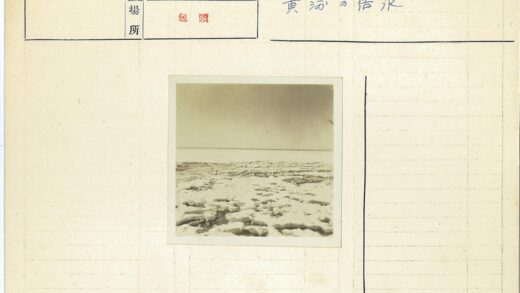【作品基本信息】
| 作者 | 董邦达 |
| 品名 | 绘高宗御笔四美具赞图轴 |
| 朝代 | 清代 |
| 文件大小 | 18.03MB |
| 分辨率(DPI) | 300×300 |
| 像素大小 | 1984×3030 |
| 尺寸(CM) | 16.79×25.65 |
| 作品数量 | 1 |
| 作品收藏 | 台北故宫博物院 |
基本数据
| 藏品类型 | 绘画 |
| 品名 |
清董邦达绘高宗御笔四美具赞 轴 Emperor Ch’ien-lung Praises ‘The Four Beauties’ |
| 分类 | 绘画 |
| 作者 | 董邦达 |
| 数量 | 一轴 |
典藏尺寸
| 【位置】 | 【尺寸】(公分) |
| 本幅 | 172×111.6 |
质地
| 【质地位置】 | 【质地】 |
| 本幅 | 纸 |
题跋数据
| 【题跋类别】 | 【作者】 | 【位置】 | 【款识】 | 【书体】 | 【全文】 |
| 作者款识 | 董邦达 | 本幅 | 日讲起居注官翰林院侍读学士。臣董邦达奉敕恭绘。 | 隶书 | |
|
印记: 臣董邦达印、学画 |
|||||
| 题跋 | 清高宗 | 本幅 | 乾隆丙寅夏五御笔 | 行书 | 顾恺之画。在陆探微吴道子前。真迹罕见。内府所收女史箴图。宝绘中夏鼎商彝也。李公麟与苏黄同时。并相推许。史称其画为顾恺之张僧繇之亚。潇湘蜀江九歌三图。皆其生平杰作。阅董其昌跋。知此四卷。前明隆万间。为上海顾中舍所藏。今先后俱入内府。因合而贮之。以符董跋。颜其室曰四美具。并为之图而赞之曰。虎头三绝。妙极丹青。桓元巧偷。自诧通灵。有宋公麟。名冠士夫。海岳避舍。顾陆为徒。潇湘澹远。蜀江清峻。九歌瓌奇,奕奕神儁。中舍鉴藏。名迹归重。剑合珠还。雅置清供。 |
|
印记: 干、隆、漱芳阁、云霞思、清心抒妙理 |
|||||
印记资料
| 【印记类别】 | 【印记】 |
| 鉴藏宝玺 | 乾隆御览之宝 |
| 鉴藏宝玺 | 宝笈三编 |
| 鉴藏宝玺 | 宣统鉴赏 |
| 鉴藏宝玺 | 无逸斋精鉴玺 |
| 鉴藏宝玺 | 宣统御览之宝 |
| 鉴藏宝玺 | 内府图书 |
| 鉴藏宝玺 | 嘉庆御览之宝 |
| 鉴藏宝玺 | 嘉庆鉴赏 |
| 鉴藏宝玺 | 石渠宝笈 |
| 鉴藏宝玺 | 三希堂精鉴玺 |
| 鉴藏宝玺 | 宜子孙 |
主题
| 【主题类别】 | 【主题(第一层)】 | 【主题(第二层)】 | 【主题说明】 |
| 其他主题 | 器用 | 文玩(琴棋书画) | 书(书卷) |
| 其他主题 | 器用 | 家具(屏风) | 桌、榻 |
| 其他主题 | 建筑 | 篱笆、围墙 | 围墙 |
| 其他主题 | 建筑 | 栏杆 | |
| 其他主题 | 建筑 | 池水 | |
| 其他主题 | 建筑 | 庭院 | |
| 其他主题 | 建筑 | 房舍 | |
| 次要主题 | 树木 | 松 | |
| 次要主题 | 树木 | 竹 | |
| 次要主题 | 建筑 | 斋馆 | |
| 次要主题 | 树木 | 杨柳 | |
| 主要主题 | 经史‧故事 | 四美具 | |
| 次要主题 | 人物 | 侍从(侍女、童仆) | 童仆三 |
| 其他主题 | 人物 | 高士(士人、隐士) | 士人 |
| 其他主题 | 山水 | ||
| 其他主题 | 树木 |
技法
| 【技法】 | 【技法细目】 |
| 工笔 | |
| 写意 | |
| 界画 | |
| 皴法 | |
| 皴法 | 披麻皴 |
| 人物衣纹描法(匀称线条) | |
| 苔点 |
参考数据
| 【类别】 | 【参考数据】 |
| 收藏着录 | 石渠宝笈三编(延春阁),第五册,页2304 |
| 收藏着录 | 故宫书画录(卷八),第四册,页134 |
| 收藏着录 | 故宫书画图录,第十四册,页343-344 |
| 内容简介(中文) |
董邦达(公元一六九九-一七六九年),浙江富阳人,字存孚,号东山。雍正癸丑进士,乾隆间,以博学精考核,命入内廷,襄编石渠宝笈诸书,后仕至礼部尚书。工画山水,喜宗法元人笔墨。 明末,顾从义藏有顾恺之女史箴图、李公麟潇湘、蜀江、九歌图四卷,董其昌以为此四卷乃古之名家极珍贵之遗物,故为顾从义题「四美具」于其室。后来四卷失散,乾隆间又陆续转入青宫,高宗喜此四卷之聚,因作赞并命董邦达绘图以志其事。 |
| 内容简介(英文) |
Tung Pang-ta (tzu: Fu-ts’un; hao: Tung-shan), was born in Fu-yang, Chekiang. He received the chin-shih degree during the Yung-cheng period and afterwards entered the court of the Ch’ien-lung emperor. He assisted in the compilation of the Imperial catalogue, Shih-chu pao-chi, and later served as an official in the Ministry of Rites. His landscape paintings were greatly influenced by Tung Ch’i-ch’ang. During the later years of the Ming dynasty, a connoisseur named Ku Chen-yu held four great mosterpieces in his collection at the some time: three scrolls by Li kung-lin and one by Ku K’ai-chih. The works, lost after Ku Chen-yu’s death, were subsequently recovered by Ch’ien-lung’s imperial collection. Delighted at having the four together once more, Ch’ien-lung wrote an inscription naming the group ‘The Four Beauties’. This painting records the occasion when the emperor wrote his words of praise. |
| 内容简介(中文) | 明末顾从义收藏东晋顾恺之、北宋李公麟四卷名迹,于乾隆十一年先后俱入清内府。乾隆皇帝喜此四卷重聚,特将四美聚置于紫禁城建福宫花园之静怡轩,亲书匾额名曰「四美具」悬挂于西室。又命翰林院学士董邦达绘图,并御题《四美具赞》记录四张名迹的聚散因缘故事。四美另一解释或取自唐王勃〈滕王阁序〉所谓「良辰、美景、赏心、乐事」。此图为董邦达〈画四美具合幅〉二轴之左幅。(20100714) |
| 内容简介(英文) | In the late Ming, the collector Gu Congyi had 4 famed handscrolls—one by Gu Kaizhi and 3 by Li Gonglin. They entered the Qing imperial collection starting in 1746. Delighted at their reunion, the Qianlong Emperor stored the “Four Beauties” in the western wing of Jingyi Building at the Garden of the Palace of Established Happiness in the Forbidden City, also personally writing its plaque. He then ordered the Hanlin Academician Dong Bangda to illustrate it, recording the imperial “Praise of the Four Beauties Complete” to recount the masterpieces being lost and found. In “Tengwang Pavilion Preface,” “Four Beauties” also means “beautiful scenery” “on a bright day” and “delightful things” “for appreciation”. This is the left scroll of the two by Dong.(20100714) |
【作品展示】

清董邦达绘高宗御笔四美具赞轴

册-唐褚遂良书倪宽传赞-1-520x293.jpg)


